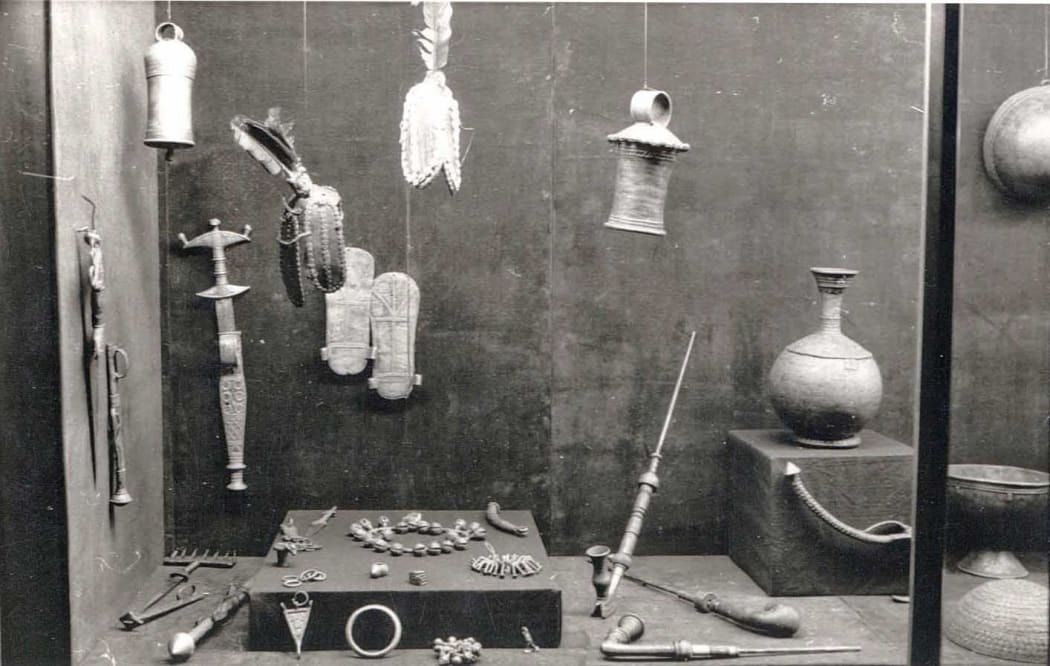
The art of the Verre peoples of Northeast Nigeria finally has gotten the scholarly attention it deserves. Three passionate researchers, Richard Fardon, Tim Chappel and Klaus Piepel, have just published a comprehensive study on their material culture. The study “Surviving Works: context in Verre arts“, is based on early collections of Verre artifacts by the German explorer Leo Frobenius (1912), collections of such objects by Tim Chappel for the Nigerian museum in Jos (1966 – illustrated above), collections of Danish missionaries and objects in private collections. The focus of the study lies on the numerous brass items the Verre have produced for ritual purposes and adornment for themselves and for neighbours, and includes a catalogue raisonnée. The study is freely available online and can be downloaded here – kudos to the authors for making it available free of charge!
Concerning their collaboration the three authors wrote:
Our collaboration was initiated by Klaus Piepel (Nigeria-Desk Officer at Misereor, the German Catholic Bishops’ Organization for Development Cooperation, from 2005-13) who, as a collector of Verre art, had contacted Tim Chappel to ask about the Verre artworks he had bought locally in the mid-1960s on behalf of the Nigerian Federal Department of Antiquities, then his employer. This enquiry encouraged Chappel to return to and begin to write up the partial copies of collection notes and images he had retained since that time, and to explore the literature on the area. Piepel had simultaneously reached out to Richard Fardon (now Emeritus Professor at SOAS University of London) who had carried out fieldwork among the Chamba, southern neighbours south of the Verre, intermittently since the mid-1970s. The sites of Fardon’s longest main fieldwork in the Alantika Mountains had been nodes in the regional circuits through which Verre products had once moved, and he had met Verre smiths there producing for a Chamba clientele, so was eager to collaborate towards understanding this wider regional set of connections.As authors we have shared the research while trying to bring to the collaboration whatever complementary skills we have. Hence, Piepel undertook the bulk of primary research in German archives and in the contemporary art market, Chappel analysed aspects of the various types of objects he collected, and Fardon has considered their ethnographic and historical contexts. But we have not worked on any of these aspects exclusively, and we have exchanged ideas and reading notes extensively. Fardon synthesised the research materials and wrote the text for Chappel and Piepel to comment upon.
